
A Comprehensive Guide to AI Chat Automation: Enhance Engagement and Productivity
In an era where customer expectations are at an all-time high, businesses face the pressing challenge of delivering timely, personalized interactions. Enter AI chat automation—not just a tool but a strategic ally that revolutionizes how companies communicate with their audience. AI chat automation enables businesses to interact with users through intelligent chatbots capable of handling a variety of tasks, from answering common questions to providing support for complex issues. This means businesses can operate more efficiently and keep customers satisfied.
A Comprehensive Guide to AI Chat Automation: Enhance Engagement and Productivity
Understanding AI Chat Automation
Different Types of AI Chatbots
AI Chatbots vs. Traditional Customer Support
Benefits of AI Chat Automation
Key Use Cases for AI Chat Automation
How to Implement AI Chat Automation in Your Business
Overcoming Challenges in AI Chat Automation
Understanding AI chat automation is essential for anyone looking to enhance their customer service and boost productivity. These chatbots are designed to simulate human-like conversation, making interactions feel more personal. They use advanced technologies such as machine learning and natural language processing to understand and respond to user queries. This capability allows businesses to provide immediate responses, significantly improving overall customer engagement and satisfaction.
By incorporating AI chat automation into their business operations, companies can streamline their processes and gain valuable AI-driven insights about their customers. This not only saves time but also frees up human agents to focus on more complex and strategic tasks. In the following sections, we will explore what AI chat automation entails, its benefits, and how it can transform your business interactions for the better.
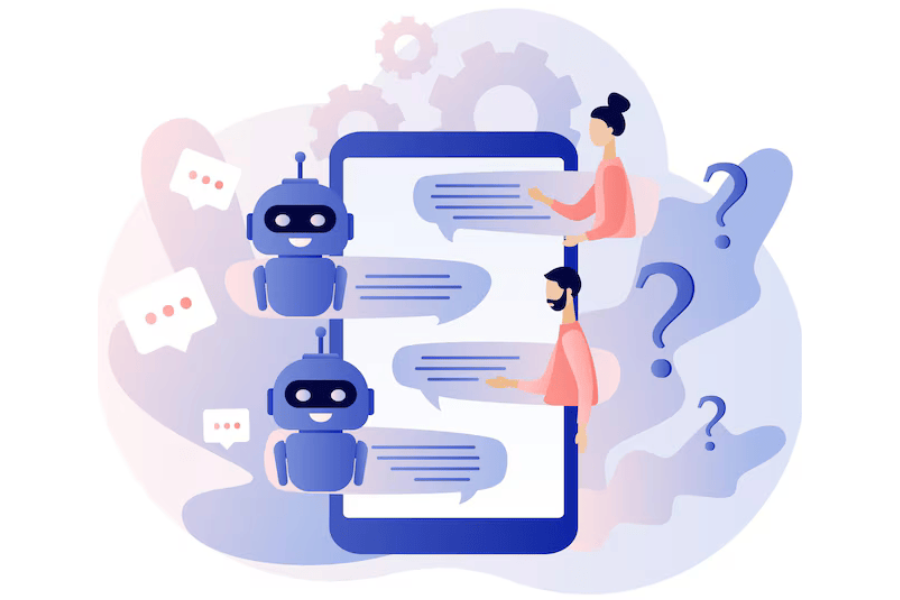
Understanding AI Chat Automation
AI chat automation refers to the use of artificial intelligence to create chatbots that can effectively interact with users without needing constant human intervention. These chatbots are designed to understand and provide relevant responses to questions or requests in a way that feels natural.
So, how does it work? AI chatbots use advanced technologies such as machine learning and natural language processing. Machine learning helps them improve over time by learning from interactions, while natural language processing allows them to understand and process human language. As a result, they can handle a wide range of inquiries, from simple questions to complex issues.
When a user types a question, the chatbot analyzes the input. It figures out what the user wants and generates an appropriate response. This ability to understand context is what sets AI chatbots apart from traditional chatbots that rely on fixed scripts.
AI chat automation also learns over time. Each interaction helps the chatbot improve its responses. It becomes more efficient and effective as it gathers more data. This means that the more it is used, the better it gets at understanding its users and providing accurate answers.
For businesses, this technology offers numerous benefits. First, it can respond to customer inquiries instantly. This effectively reduces wait times and improves customer satisfaction. Additionally, AI chatbots can handle multiple conversations at once. This means businesses can serve more customers simultaneously without the need to hire extra staff.
Moreover, AI chatbots can gather valuable information. They can track customer preferences and behaviors, which can inform sales strategies. This data helps businesses create personalized experiences for their users.
In summary, AI chat automation transforms customer interactions. It streamlines customer communication and enhances user experiences while freeing up human agents to tackle more complicated tasks. Embracing this amazing technology can result in improved efficiency and greater satisfaction for both customers and businesses.
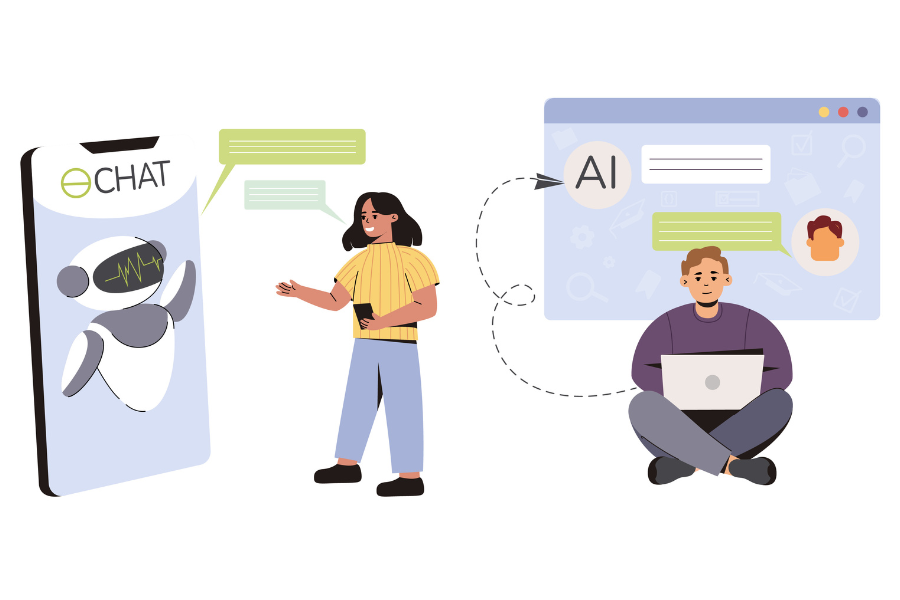
Different Types of AI Chatbots
AI chatbots come in various types, each with unique features and capabilities. Understanding these important differences can help you choose the right one for your needs. Let’s break down the main types of AI chatbots.
Rule-Based Chatbots
Rule-based chatbots operate on simple rules and decision trees. They follow predefined scripts to respond to user inputs. For example, if a user asks about store hours, the chatbot checks its script for that specific query and provides a fixed answer. These bots are limited because they can only handle specific questions. If the conversation goes off-script, they struggle to respond effectively. This makes them less flexible compared to more advanced options.
AI Chatbots (Conversational AI)
AI chatbots are a step up from rule-based bots. They use advanced technologies like machine learning (ML) and natural language processing (NLP). These chatbots can understand context and meaning. Therefore, they provide dynamic, human-like responses. For example, if a customer asks about a problem, an AI chatbot can interpret the inquiry and offer tailored suggestions. This adaptability makes them much more effective in customer service scenarios.
Generative AI Chatbots
Generative AI chatbots take things even further. They create real-time responses based on the ongoing conversation. Instead of relying on predefined answers, these bots can generate unique replies that fit the context of the discussion. This allows for more engaging and natural interactions. If a user asks for recommendations, a generative AI chatbot can pull from various resources and provide customized suggestions that feel personal.
Hybrid Chatbots
Hybrid chatbots combine features of both rule-based and AI chatbots. They can switch between scripted responses and AI-driven interactions. For instance, they might start with a simple FAQ for common questions. However, if a user asks a more complex question, the chatbot can transition to an AI-driven response. This versatility makes them suitable for businesses that want the reliability of scripted answers while still providing advanced support.
Voice-Activated Chatbots
Voice-activated chatbots are designed to interact using voice commands. They are commonly found in virtual assistants. These chatbots recognize spoken language and respond accordingly. They offer a hands-free experience, making them convenient for users who prefer speaking over typing. Their ability to process natural speech adds another layer of accessibility and ease of use.
Each type of AI chatbot has its strengths and weaknesses. Rule-based bots are straightforward but limited. AI chatbots add depth and flexibility. Generative AI chatbots offer the most dynamic interactions. Hybrid models provide a blend of both worlds, while voice-activated bots enhance accessibility.
By understanding these types, you can better decide which chatbot fits your needs. Whether you're looking to improve customer service or automate responses, there’s an AI chatbot for you.
AI Chatbots vs. Traditional Customer Support
When you think about customer support, two big players come to mind: AI chatbots and traditional support teams. Both have their strengths, but they function quite differently.
AI chatbots are all about efficiency. They can handle multiple conversations at once. This means customers don’t have to wait long for answers. They’re available 24/7, which is a big plus. So, if someone has a question at 2 AM, the chatbot is there. They can quickly respond to common inquiries like order tracking or password resets. It’s like having a helpful assistant on call all the time.
On the flip side, traditional customer support relies on human agents. These folks bring empathy and understanding to the table. They can handle complex issues that a chatbot might struggle with. Sometimes, a customer just needs to talk to someone who understands their situation. That human touch can make a big difference, especially when emotions run high.
Now, where do they fit best? AI chatbots shine in environments where speed matters. If your business sees a lot of repetitive questions, chatbots can take care of those. They free up human agents to focus on tricky issues that need a personal touch.
Traditional support is best when the queries are complex or sensitive. For instance, if a customer has a complaint or a serious issue, talking to a real person can be much more reassuring.
Ultimately, it’s not about one being better than the other. It’s about using both in ways that complement each other. Chatbots can handle the routine stuff, while human agents tackle the more complicated matters. This combination results in a smoother experience for customers and can improve overall satisfaction.
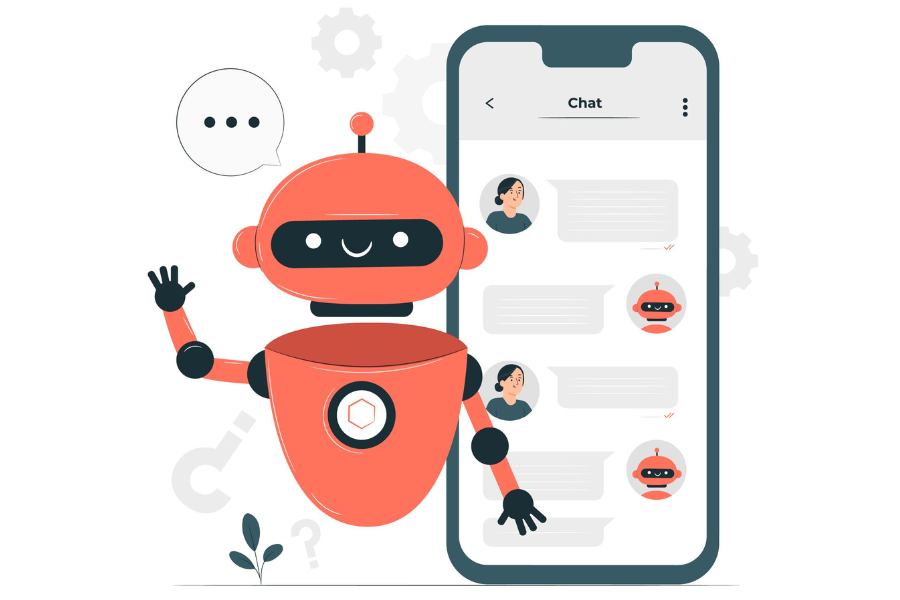
Benefits of AI Chat Automation
AI chat automation is transforming how businesses interact with their customers. By leveraging advanced technology, businesses can enhance communication while saving time and resources. Let’s explore the benefits of AI chat automation and how they can make a real difference.
Enhanced Customer Engagement
AI chatbots are available 24/7, providing customers with instant responses. This immediate availability means that customers can get help whenever they need it. Also, personalized interactions make customers feel valued. When a chatbot remembers past interactions, it can tailor responses based on previous queries, creating a more engaging experience.
Boosting Productivity
Automating repetitive tasks allows human employees to focus on more complex issues. This increases overall employee efficiency. Furthermore, AI can streamline workflows by integrating with existing tools. As a result, teams can work smarter, not harder.
Cost Reduction
AI chatbots can lower operational costs significantly. With fewer agents needed to handle routine inquiries, businesses can save on staffing expenses. Additionally, better engagement often leads to increased revenue. Happy customers are more likely to make purchases and return for future business.
Improved Customer Satisfaction
Consistency is key in customer service. AI chatbots provide consistent responses, ensuring that customers receive the same quality of service every time. Instant solutions to their queries boost satisfaction as well. Customers greatly appreciate when their problems are resolved quickly, leading to a better overall experience.
Scalability
As businesses grow, so do their customer service needs. AI chat automation can easily scale to handle increased interactions. Chatbots can manage thousands of conversations simultaneously without compromising quality. This scalability is vital for growing businesses looking to maintain high service standards.
Data Collection and Insights
AI chatbots gather valuable data during interactions. This information can reveal trends, customer preferences, and common issues. Businesses can use these important insights to improve their offerings and tailor marketing strategies. Understanding customer behavior helps in making informed decisions.
24/7 Support with Multilingual Capabilities
Many AI chatbots can communicate in multiple languages. This feature ensures that businesses can cater to a diverse customer base. Providing support at all hours in different languages shows commitment and enhances customer trust.
Faster Onboarding
For new customers, AI chatbots can provide onboarding assistance. They can guide users through processes, answer FAQs, and help set up services. This quick onboarding experience can lead to faster customer satisfaction and retention.
Continuous Improvement
AI chatbots learn and adapt over time. They analyze past interactions to improve responses and overall performance. As they evolve, the service quality continues to enhance, leading to better customer experiences and outcomes.
In a nutshell, AI chat automation offers numerous advantages that can significantly improve customer service. By enhancing engagement, boosting productivity, and reducing costs, businesses can create a more efficient and satisfying experience for their customers. Embracing this technology not only benefits the company but also leads to happier, more loyal customers.
Key Use Cases for AI Chat Automation
AI chat automation is becoming increasingly essential in various industries. It streamlines processes and enhances user experiences. Let’s explore some key use cases where AI chatbots can make a significant impact.
Customer Support: AI chatbots can handle common customer inquiries around the clock. This means customers get answers quickly, even outside regular business hours. It reduces the load on human agents.
Lead Generation: Chatbots can engage website visitors and collect information. They can ask questions to qualify leads, making it much easier for sales teams to follow up with potential customers.
Appointment Scheduling: Many businesses use chatbots to schedule appointments. They can sync with calendars, reducing the hassle of back-and-forth emails. People appreciate the convenience.
Order Tracking: Customers often want to know the status of their orders. Chatbots can provide updates and answer questions about shipping. This keeps customers informed and satisfied.
FAQ Handling: AI chatbots can manage frequently asked questions. They can deliver consistent answers to the most basic questions, freeing up time for support staff to focus on more complex issues.
Product Recommendations: Chatbots can analyze user preferences and provide personalized product suggestions. This improves the shopping experience and can boost sales.
Feedback Collection: After a purchase, chatbots can reach out for customer feedback. This helps businesses gather insights on products and services and can guide improvements.
Internal Support: Companies can use chatbots internally to assist employees. They can help with HR inquiries, IT support, and policy questions, streamlining internal communication.
These use cases highlight the versatility of AI chat automation. They show how it can enhance both customer and employee experiences. As businesses look to become more efficient, AI chatbots are becoming essential tools.
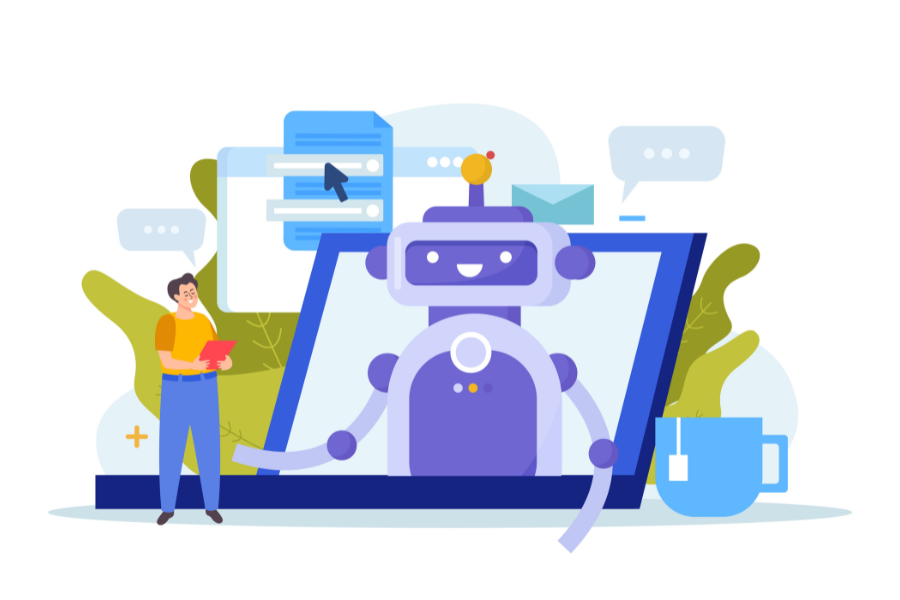
How to Implement AI Chat Automation in Your Business
Implementing AI chat automation in your business can be a game-changer. It streamlines communication, enhances customer service, and saves time. If you’re considering this technology, here are some practical tips to help you get started.
Define Your Goals
Before diving in, clearly outline what you want to achieve with an AI chatbot. Do you want to reduce response times? Or maybe improve customer satisfaction? Setting specific goals will guide your efforts.
Know Your Audience
Understand who your customers are. What are their common questions? What information do they seek? This insight will help you tailor the chatbot’s responses to customers effectively.
Choose the Right Platform
When selecting a chatbot platform, look for one that fits your needs. Consider user-friendliness and integration options with your current systems. Take your time to explore various platforms.
Create Engaging Content
Focus on crafting clear and engaging responses for your chatbot. Use simple language and friendly tones. This approach ensures your customers feel comfortable interacting with it.
Test and Refine
Once your chatbot is live, monitor its performance. Gather feedback from users. This is key for improvement. Regularly update the responses and features based on this feedback.
Train Your Chatbot
Utilize the AI’s capabilities to learn from interactions. Feed it real customer queries. This will help it understand context better and provide more accurate answers over time.
Keep It Human-Friendly
Make sure your chatbot can smoothly escalate conversations to human agents when necessary. Customers appreciate the option to speak to a real person if their issue isn’t resolved.
Promote Your Chatbot
Make sure to let your customers know about your new chatbot. Use website banners, social media, or email notifications. Awareness will encourage them to engage with it.
Measure Success
Track the chatbot’s performance metrics. Look at response times, customer satisfaction ratings, and engagement levels. This data will help you see the impact of your AI chat automation.
Stay Updated
The world of AI is constantly evolving. Stay informed about new features or improvements in chatbot technology. Regular updates can enhance your chatbot's performance.
Implementing AI chat automation doesn't have to be overwhelming. By following these tips, you can create a valuable tool that improves customer interactions and streamlines your operations.
Overcoming Challenges in AI Chat Automation
Implementing AI chat automation can be a game-changer for businesses, but it does come with its own set of challenges. Let's explore some common hurdles and how to tackle them.
One significant challenge is understanding customer intent. Sometimes, customers may phrase their questions in unexpected ways. To address this, businesses should invest time in training their AI models. Regularly updating the chatbot’s knowledge base can help it better understand a variety of inquiries. This will ensure more accurate responses and enhance user experience.
Another issue is the potential for miscommunication. AI chatbots can sometimes generate responses that aren’t entirely relevant. To overcome this, it’s essential to monitor the chatbot’s interactions closely. By analyzing conversations, businesses can identify patterns and adjust the AI's training accordingly. This way, the chatbot becomes more aligned with customer expectations.
Data privacy is also a concern. Customers may be hesitant to share personal information with chatbots. To build trust, businesses should be transparent about how customer data will be used. Additionally, implementing strong security measures can reassure customers that their information is safe.
Moreover, some businesses may struggle with integrating chatbots into existing systems. It’s important to choose a user-friendly platform that offers seamless integration options. Many platforms provide support and documentation to simplify the setup process.
Lastly, maintaining a balance between automated responses and human intervention can be tricky. While AI chatbots are great for handling routine queries, complex issues may still require a human touch. Businesses can set up escalation protocols so that when a chatbot cannot resolve an issue, it promptly connects the customer to a human agent.
By anticipating these challenges and preparing solutions, businesses can maximize the benefits of AI chat automation. It’s all about learning and adapting as the technology evolves. With the right strategies, companies can effectively enhance customer service and streamline operations.
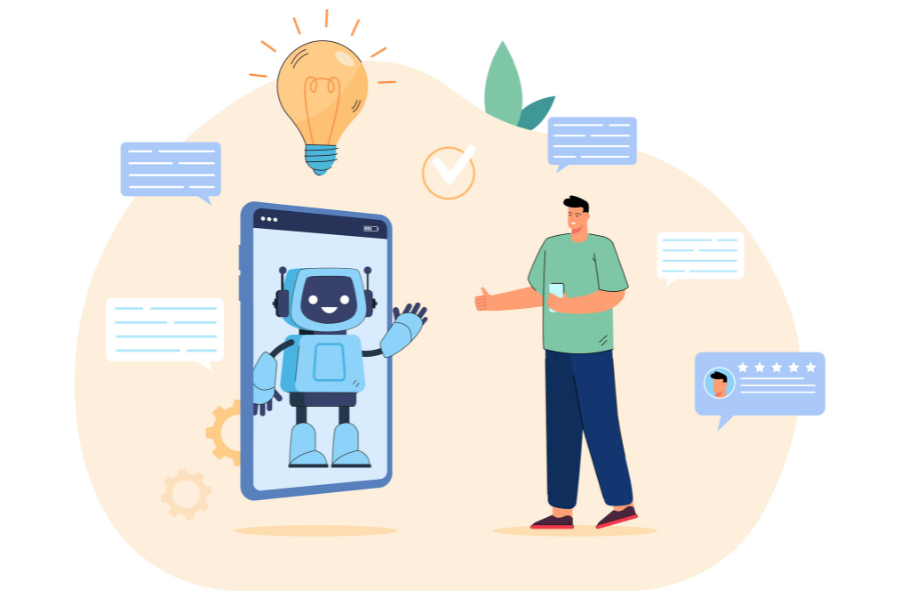
The Future of AI Chat Automation
The future of AI chat automation looks very promising. More businesses are recognizing the value of chatbots in improving customer interactions. They provide quick answers and can handle multiple queries at once, making support more efficient.
As AI technology advances, chatbots will become even smarter. They'll better understand context and emotions, allowing for more personalized interactions. This means customers will feel heard and valued.
Also, chatbots will keep evolving with newer features. They will be able to integrate seamlessly with other tools, enhancing overall customer experiences. It's likely they will handle complex tasks, reducing the need for human intervention in many cases.
Importantly, businesses can save costs while improving service quality. This makes chatbot automation a win-win solution.
So, embracing AI chat automation can be a game-changer for many companies. It’s an opportunity to enhance customer service and streamline operations. Keep an eye on this trend; the benefits could be substantial.
Frequently Asked Questions
To help you navigate the world of AI chat automation, we've compiled a list of frequently asked questions. These questions cover various aspects of AI chatbots. So, whether you're considering implementing a chatbot for your business or simply curious about the technology, this list will provide valuable insights.
Can AI chatbots operate without human intervention?
Yes, AI chatbots can operate without human intervention by utilizing automated responses to handle user inquiries. They are designed to manage routine tasks, provide information, and address customer queries autonomously, freeing human agents to focus on more complex issues.
What is the difference between rule-based and generative AI chatbots?
Rule-based chatbots rely on predefined scripts and programmed responses, only interacting within the limitations of these set rules. In contrast, generative AI chatbots utilize advanced machine learning and natural language processing to effectively understand context and create dynamic, human-like responses tailored to the specific conversation.
Are AI chatbots capable of handling complex queries?
Yes, AI chatbots are capable of handling complex queries, particularly generative AI chatbots, which can interpret the intent behind user inputs and generate relevant, context-aware responses. They learn from previous interactions, allowing them to improve their ability to manage intricate questions over time.
What common tasks can AI chatbots perform for businesses?
Artificial intelligence chatbots can perform a variety of tasks for businesses, including answering frequently asked questions, assisting customers with troubleshooting, providing product recommendations, and facilitating order processing. They can also handle appointment scheduling and provide real-time updates on services or products, streamlining customer interactions and improving efficiency.
How can implementing chatbots improve conversion rates for my business?
Implementing chatbots can enhance conversion rates by providing instant support and personalized recommendations, which help guide customers through the purchasing process. By engaging visitors promptly and addressing their concerns in real-time, chatbots can reduce cart abandonment rates and increase overall customer satisfaction, resulting in higher sales.
What communication channels can AI chatbots be integrated with?
AI chatbots can be integrated with various communication channels, including websites, mobile apps, social media platforms, and messaging apps. This multi-channel integration allows businesses to interact with customers wherever they are, enhancing reach and engagement.
How do chatbots handle user feedback?
Chatbots handle user feedback by actively soliciting input through prompts or surveys after interactions. They can analyze this feedback using natural language processing to identify trends and areas for improvement, which helps businesses refine their services and enhance the overall customer experience.
Can AI chatbots manage follow-up questions effectively?
Yes, AI chatbots can manage follow-up questions effectively by utilizing contextual understanding and conversation history. They can track the flow of conversation, allowing them to provide relevant answers and clarify previous interactions, ensuring a coherent and seamless user experience.
What is a knowledge source in the context of AI chatbots?
A knowledge source in the context of AI chatbots refers to the repository of information that the chatbot uses to generate responses. This can include FAQs, product manuals, company policies, or any other structured data that the chatbot can reference to provide accurate and relevant answers to user queries.
Can AI chatbots retain conversation history?
Yes, AI chatbots can retain conversation history, enabling them to provide a more personalized experience for users. By remembering past interactions, the chatbot can tailor responses based on previous conversations, improving continuity and user satisfaction.
How do I measure the effectiveness of an AI chatbot?
The effectiveness of an AI chatbot can be measured through various metrics, including response accuracy, customer satisfaction ratings, and the time taken to resolve inquiries. Additionally, tracking the number of queries handled independently by the chatbot versus those escalated to human agents can provide insights into its overall performance and efficiency.
Final Thoughts
As we wrap up this guide on AI chat automation, we hope you found the insights valuable for enhancing engagement and productivity in your business. Understanding how chatbots can transform customer interactions is key to staying ahead in today’s fast-paced digital world. From providing instant responses to streamlining communication, AI chat automation offers a multitude of benefits that can elevate your customer service experience.
With the right tools, businesses can leverage chatbots to not only meet customer needs but also drive efficiency and sales. It's exciting to think about the possibilities that automated conversations can bring. Implementing these technologies can significantly free up your team’s time, allowing them to concentrate more on strategic tasks while ensuring that customers receive prompt assistance.
If you’re looking for an all-in-one solution to boost your business growth, consider exploring Zapiy. Our all-in-one business growth platform integrates conversation and chat automation seamlessly with lead generation, CRM, and marketing tools. It’s an easy way to nurture customer relationships and increase sales opportunities.
Ready to transform your customer interactions? Dive into the world of AI automation with Zapiy today. Start your free trial.



Youtube
Facebook
Instagram
LinkedIn
TikTok
X
Pinterest